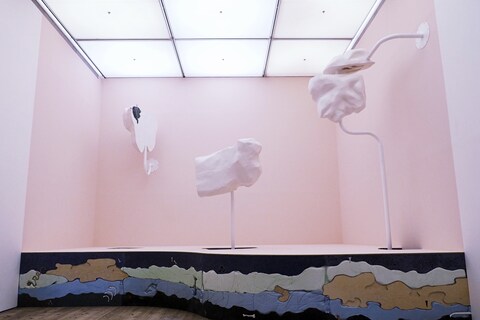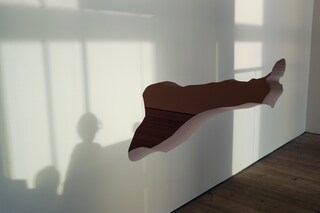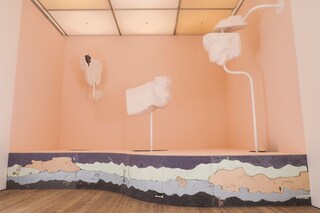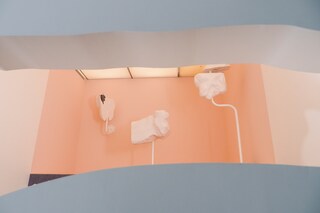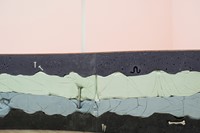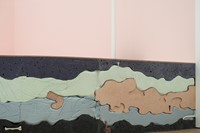As a new exhibition of Holly Hendry's beguiling work opens at BALTIC, we sat down with her to talk about her tactile pieces and the inspiration she finds in the body
Holly Hendry is a young artist who is definitely going places. Having got her MA in sculpture from the RCA just last year, she has already been signed to London’s Limoncello gallery and has just opened a major show at BALTIC, Gateshead’s Level 2 space. Titled Wrot, the exhibition is a fascinating choreography of forms, showcasing Hendry’s command of space, colour and drama. Like an archaeological cross-section, the work shines a light on packed layers of treacly, toothpaste-coloured material, in which amusing items – dog chew bones, plaster teeth – are embedded. Of course, with a title like Wrot (a building trade term for timber with one or more surfaces planed smooth), the mind immediately turns to its W-less homophone, and the breakdown of organic matter. The tension between interiority and exteriority is a frequent dynamic of her work, often suggestive of the body’s internal systems, but also skin. Pink, inflated forms squeeze against frames, while plaster and polyurethane foam figures sag on metal and wood supports and black latex oozes from between layers of blancmange-coloured plaster like jam from a cake. (Edible overtones aren’t incidental — a video from 2012, recently shown at Belmacz Gallery, used candy floss as its principle material.) Voluptuous and supremely tactile, Hendry’s beguiling work asks the viewer to imagine what lies beneath myriad surfaces, and to think about the body in relation to architectural space. Here, she talks about the ins and outs of her work.
On the title of the show...
“Wrot’s specific definition relates to the building trade, to timber with one or more surfaces planed smooth. Most people would take from it this idea of break-down or decay and things happening under the surface or out of view. I like that play, and a lot of the works in the show are to do with surfaces and things in the ground or happening below the surface but also things that have a relationship with our body that we kind of prime and polish. So there are these parallels between the kind of muckiness of things beneath and the smoothing-over about it as well.”

On the body...
“With the layered works, they have archaeological references as well as bodily references, where people relate to them being under the skin, or intestines. People also say edible stuff, so pudding-type, sugary things as well. There is this weird dialogue between things that would otherwise maybe feel quite separate. The cross-section is something that is quite present in archaeology, medicine and architecture – it’s always a slice, a diagram to show what’s going on, or to demonstrate. It’s quite an instructional thing. These works are slightly out of control and over of the top in terms of how they’re made, with pouring and sloshing materials, and not seeing what’s going on at all. The shell of the work’s taken off, so the cross section is really important for me in terms of bringing those references in, which are very instructional, but within medicine they refer to the dysfunctional body, slice-and-reveal. The layers are a collection of lots of different material tests, so it’s like a physical bringing-together.”
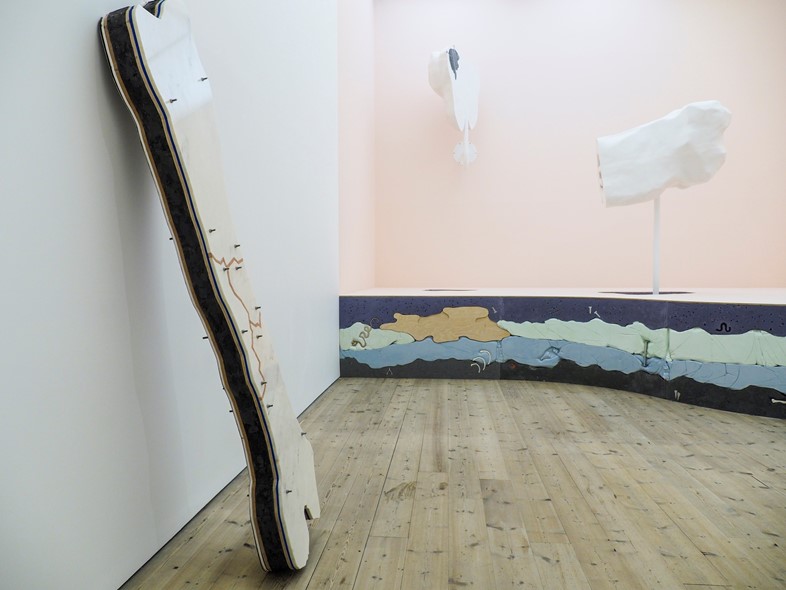
On cartoon touches...
“With these smaller elements I try to put a twist on things and tweak what somebody might be getting the impression of. The humour’s usually in the detail, these moments where people are closer to realising this is a plaster bandaging up a crack in the work, or something quite specifically crafted. In the BALTIC show, one of the details I’ve got is this specifically crafted wooden plug that I spent quite a long time making. They’re kind of more dumb objects and actions but with a real sincerity through the intimacy of their origins and what I’ve taken from them and what they mean to me, and what that overall impression is of them. Each one is quite visually indicative of a real life object in the world, but a cartoon version… [There’s] this initial cartoon-ness about them that’s a bit jokey but then the actual content behind them is a bit darker than it first appears. A lot of these details refer to the breakdown of the body or death or missing parts of us, so it’s this weird parallel between laughter and death that seems to go together in a weird way quite a lot, even though they are completely opposite things.”

On getting stuck in with her materials...
“A lot of them are made-up things, so there’s plaster with different pigments added in, birch ply that’s cut and layered and has objects incorporated into it. Then there are other materials like jesmonite, where I mix it with an aggregate of collected materials. For [my 2016 body of work] Gut Feelings, there was soap and chewing gum as well. They end up being these made-up materials in a way but reference things that don’t disappear… I’m kind of choosing the materials or testing the materials that have a specific relationship to what I’m thinking about, like the chewing gum for example, or soap, or more luxury items that you use to rub on your body and improve yourself. In the Gut Feelings work I used rock salt as well. It’s this weird material that’s quite specifically marketed as a luxury item, but it’s used in cooking as well as health-care, so it’s got these weird dialogues between outside and inside and consumption as well.”
Wrot runs until September 24, 2017 at Baltic Mill, Gateshead.

